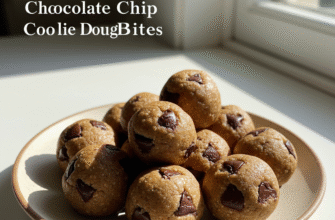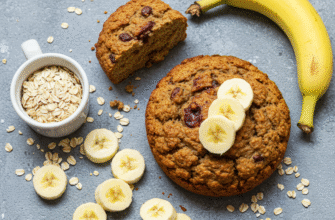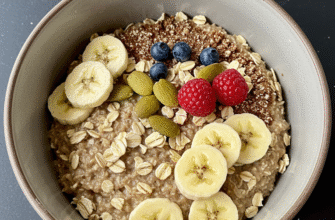You hear about fiber all the time. It’s tossed around in conversations about healthy eating, digestion, and keeping things moving. But “fiber” isn’t just one single thing. It’s a complex group of plant-based carbohydrates that our bodies can’t fully digest. Understanding the main types can help you appreciate why variety in your diet matters so much for overall well-being.
The Two Main Players: Soluble vs. Insoluble
The most common way scientists and nutrition folks talk about fiber is by splitting it into two broad categories: soluble and insoluble. The names give you a big clue about how they behave when they meet water, which has a significant impact on what they do inside your digestive system.
Soluble Fiber: The Gelling Agent
Think of soluble fiber as the type that gets friendly with water. When you eat foods rich in soluble fiber, it absorbs water in your gut and transforms into a gel-like substance. Imagine adding water to oatmeal – that thickening effect is partly thanks to soluble fiber at work. This gel consistency does a couple of interesting things as it moves through your digestive tract.
Firstly, it can help slow down digestion. This might sound like a bad thing, but it can actually be helpful in moderating how quickly nutrients, including sugars, are absorbed into the bloodstream. Secondly, this gel adds softness and bulk to your stool, contributing to easier passage. It’s like adding a smoother consistency to the contents making their way through.
Where can you find it? Soluble fiber is abundant in foods like:
- Oats and oatmeal
- Barley
- Beans and lentils (legumes)
- Peas
- Apples (especially the flesh)
- Citrus fruits (like oranges and grapefruits)
- Carrots
- Psyllium husk (often used in supplements)
- Flax seeds and chia seeds (they form a gel when soaked)
Because it forms this gel, soluble fiber often contributes to a feeling of fullness after eating, which can be a helpful aspect of managing appetite.
Insoluble Fiber: The Bulking Agent
Now, meet insoluble fiber. As its name suggests, this type doesn’t dissolve in water. Instead of forming a gel, it tends to remain more intact as it passes through your digestive system. Its main job is to act like a “bulking agent.” Think of it like a sponge that doesn’t fully dissolve but adds volume.
This added bulk helps to increase stool weight and encourages the movement of material through your intestines. It essentially helps sweep things along, promoting regularity. If soluble fiber is about smooth consistency, insoluble fiber is more about efficient transit. It can help keep your digestive system running on a more predictable schedule.
Where can you find it? Look for insoluble fiber in:
- Whole wheat flour and wheat bran
- Whole grains (like brown rice, quinoa)
- Nuts and seeds
- Beans and lentils (yes, many foods contain both types!)
- Vegetables like cauliflower, green beans, potatoes (especially the skins)
- Fruit skins (like apple peels)
- Corn bran
It’s important to remember that most whole plant foods contain a mix of both soluble and insoluble fiber, though the ratios can vary significantly. This natural combination is one reason why eating a variety of plant-based foods is so beneficial.
Beyond Soluble and Insoluble: Fermentability Matters
While soluble and insoluble are the headline acts, there’s another important characteristic: fermentability. This refers to whether or not the fiber can be broken down (fermented) by the trillions of beneficial bacteria living in your large intestine, often referred to as your gut microbiota.
What is Fermentable Fiber?
Fermentable fibers essentially serve as food, or prebiotics, for your gut microbes. When these bacteria metabolize or ferment these fibers, they produce various substances, including short-chain fatty acids (SCFAs). These SCFAs are quite important for maintaining the health and integrity of the cells lining your colon. They are considered a key energy source for these cells and contribute to a healthy gut environment.
Generally speaking, many (but not all) soluble fibers tend to be highly fermentable. Think of the fibers in oats, beans, and certain fruits. Your gut bacteria readily feast on these.
What About Non-Fermentable Fiber?
Non-fermentable fibers, on the other hand, pass through the large intestine largely unchanged. They aren’t significantly broken down by gut bacteria. Many (though again, not all) insoluble fibers fall into this category, such as the cellulose found in plant cell walls (think celery strings or tough greens). Their primary role remains adding bulk and aiding transit time, rather than feeding the gut microbes directly.
It’s not a strict division; some fibers might be partially fermentable. The key takeaway is that different fibers interact with your gut microbiome in different ways. Some provide nourishment for beneficial bacteria, while others primarily focus on the mechanical aspects of digestion, like adding bulk.
Getting the Right Mix: Tips for Intake
Understanding the types of fiber highlights why dietary diversity is key. You need both the gelling action of soluble fiber and the bulking action of insoluble fiber, plus the gut-nourishing potential of fermentable fibers.
Focus on Whole Foods
The best way to get a good mix of different fiber types is to eat a wide variety of whole plant foods. Fruits, vegetables, whole grains, legumes (beans, lentils, peas), nuts, and seeds are your fiber powerhouses. Processing often strips fiber away (like making white flour from whole wheat), so choosing whole, less-processed options is generally better for fiber intake.
Increase Gradually
If you’re looking to increase your fiber intake, do it slowly! Suddenly adding a huge amount of fiber can lead to uncomfortable digestive symptoms like gas, bloating, and cramping as your system adjusts. Add high-fiber foods bit by bit over several weeks.
Important Note on Increasing Fiber: When you increase your fiber intake, it’s crucial to also increase your water intake. Fiber, especially soluble fiber, absorbs water. Without enough fluid, fiber can actually contribute to constipation rather than alleviate it. Aim for plenty of fluids throughout the day as you incorporate more fiber-rich foods.
Read Labels (Sometimes)
While focusing on whole foods is best, packaged foods sometimes list fiber content. You might occasionally see specific fibers listed, like “beta-glucan” (a soluble fiber from oats) or “inulin” (a fermentable fiber often added to processed foods). However, don’t get too bogged down in specifics – aiming for variety usually covers your bases.
Fiber: A Complex Team Player
Fiber isn’t just roughage; it’s a diverse group of compounds with distinct roles. From the gel-forming soluble types that influence digestion speed and stool consistency, to the bulking insoluble types that promote regularity, and the fermentable kinds that nourish your gut microbiome, each contributes uniquely. By enjoying a wide array of plant-based foods, you naturally consume a mix of these fibers, supporting your digestive system in multiple ways. It’s less about isolating one “best” type and more about appreciating the synergy of consuming them all through a balanced, varied diet.








